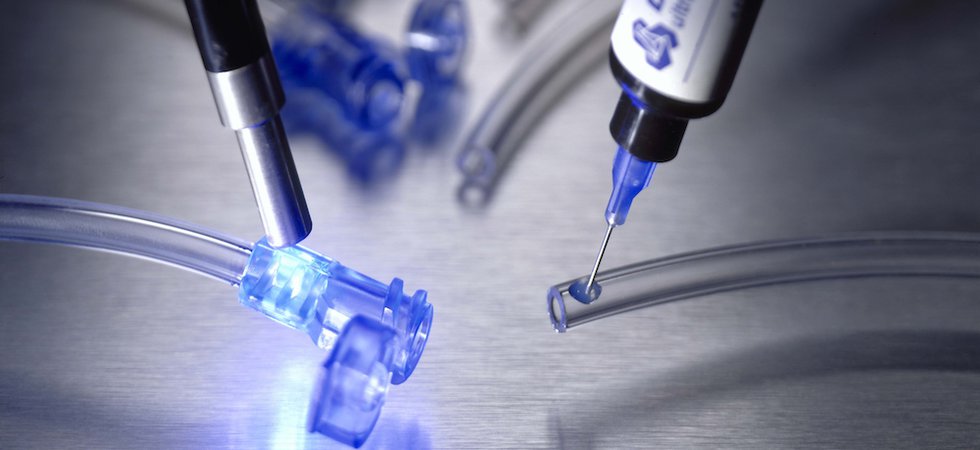Choosing the right adhesive for assembling medical devices

There is no such thing as a perfect adhesive, and choosing an appropriate material requires careful consideration at the design stage. Design engineers can weigh up functionality, processability, and commercial factors to strike a balance between performance and production efficiency.
Adhesives are a popular bonding option in medical devices, because they can distribute load or stress, eliminate joint fatigue, improve impact resistance, and provide good aesthetics. Achieving an optimal bonding process requires the design team to consider the bonding method and materials including: joint design, surface preparation, quality control, application, and cure.
Substrate choice
Choosing bondable substrates is important — successful adhesion depends on the surface energy of the substrate and the adhesive. For wetting to be achieved, the adhesive must have a lower surface energy than the substrate. However, many medical plastics, such as PEEBAX and PEEK, have low surface energies, and if these materials are essential to the assembly’s design, surface treatment or adhesive formulations specially designed for these substrates may be required.
If the coefficient of thermal expansion (CTE) is different for each substrate, the adhesive may need to be tough or flexible to withstand differing amounts of thermal expansion, which can incur significant stress on the bondline.
Bondline design
There needs to be room in the bondline for the adhesive, as it will not work if all the adhesive is squeezed out when the part is assembled. A good rule of thumb is to allow 0.100 to 0.125 mm bondline gap. The adhesive bondline thickness should be as consistent as possible across the entire bonded area; variations in bondline thickness can affect the strength and durability of the bond. Nevertheless, if this is impossible, adhesives are available in a broad range of viscosity options, including low viscosity for wicking and high viscosity for gap filling.
Light curable adhesives can only be used if UV light can reach the bondline, and the designer may wish to incorporate substrates that light can pass through if the bondline is not otherwise visible. Light curable materials offer significant productivity benefits due to their easy handling and quick “on demand” curing, which reduces labour, space, and energy demands. The resultant process is easy to automate, control, and validate.
Environmental considerations
As well as establishing a successful bond between adhesive and substrate, it is important to consider the subsequent environment. This includes the temperature, solvents, chemicals, weather, stress, and vibration the product is likely to be exposed to during its lifetime.
Most medical products must withstand sterilisation after assembly; EtO (ethylene oxide), or E-beam or gamma radiation, are used. Some devices, such as surgical tools, may need to resist multiple autoclave cycles, and this is a more aggressive process to an adhesive joint. The ability to resist the required sterilisation method is a key selection factor.
Processing time
As well as selecting a material that will effectively bond the substrates throughout the lifetime of the product, design engineers must carefully consider production needs and productivity.
Adhesives could lengthen a production process compared with mechanical fastenings, as manufacturers may need to wait for them to cure before proceeding to the next stage. Choose an adhesive with a cure schedule suitable for the production volumes; UV light curing or cyanoacrylate adhesives provide almost instant cure and can reduce WIP or alleviate production bottlenecks.
A crucial piece of advice is not to request more strength or environmental resistance than is needed. Because there is no perfect adhesive, there will always be a compromise. Over specifying on technical requirements can eliminate adhesives that are equally suitable for the assembly, at a lower cost and with simpler production capabilities.
It is often the case that the cost of bonding per part is more than the cost of the adhesive per part. Focussing on the material cost without taking a holistic view of the entire process may not be good economics.
Intertronics offers ISO 10993 and USP Class VI adhesives and protective materials designed to adhere to most medical device plastics that are solvent free, fast cure, and sterilisable, in a range of viscosities and hardnesses.
Article Source: MPN









